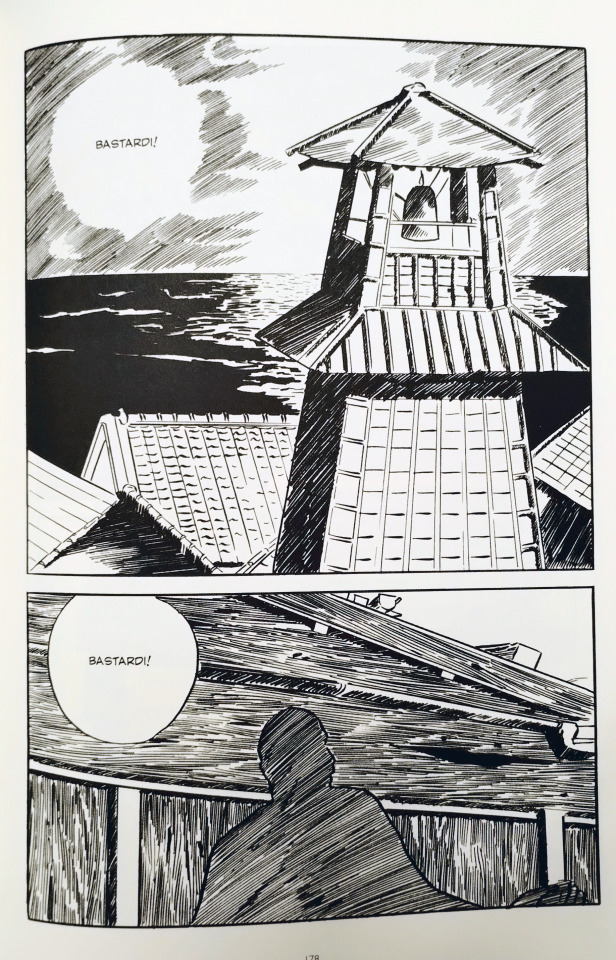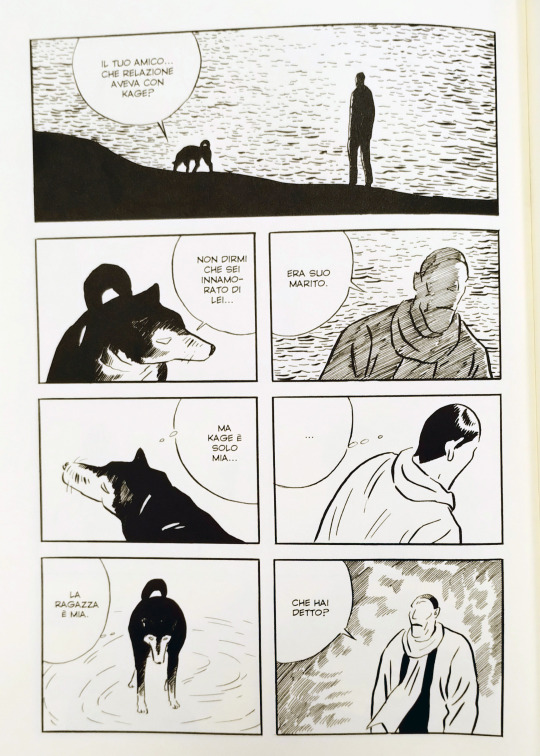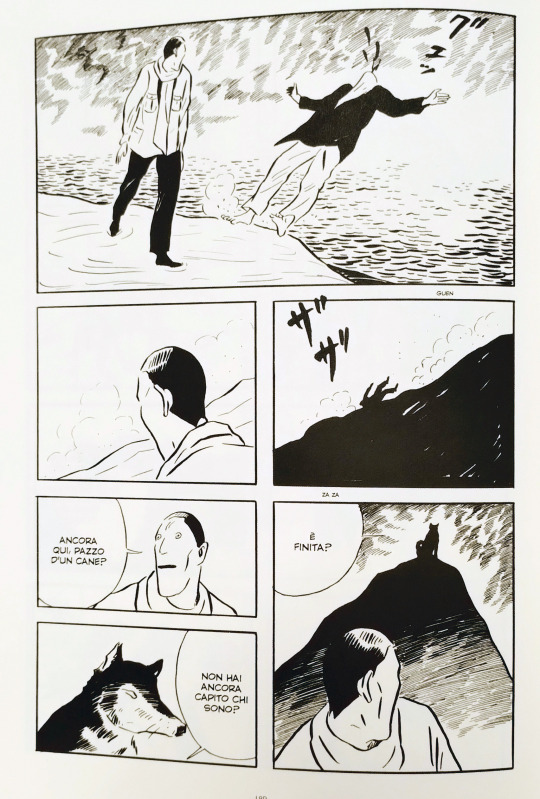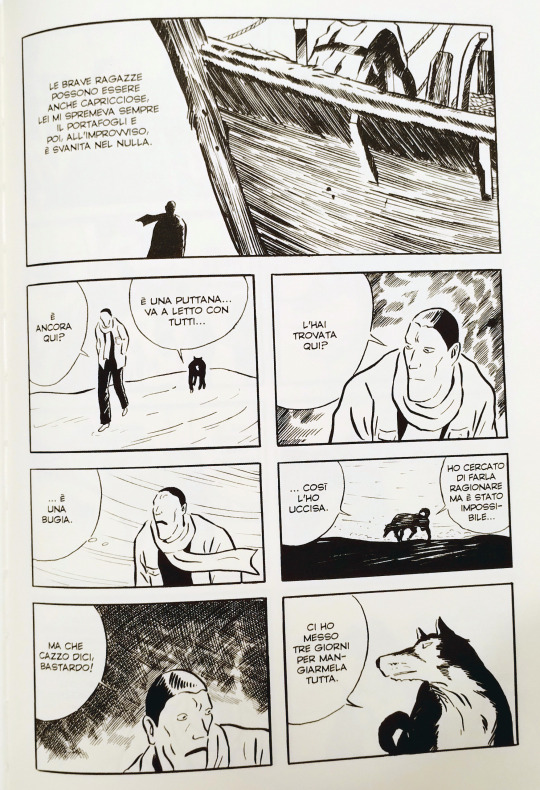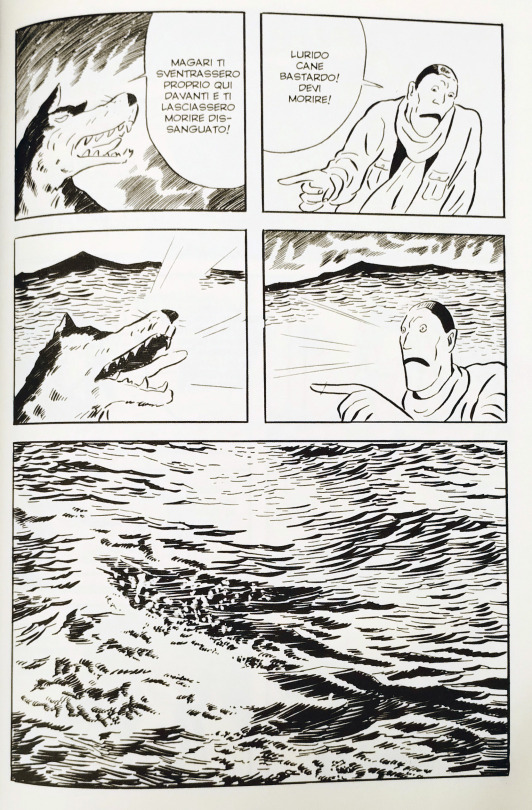#tadao tsuge
Text
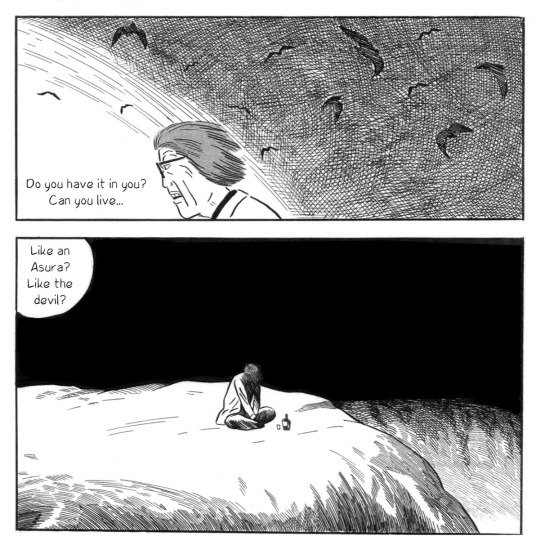
tadao tsuge's slum wolf (english edition) || つげ忠男の『狼の伝説』(英語版)
26 notes
·
View notes
Text

From Tadao Tsuge's Trash Market
12 notes
·
View notes
Text
Turno Nocturno #4_El tiempo sin rumbo y los hermanos Tsuge
¡Bienvenidos a otro número de Turno Nocturno! Como de costumbre, repasito semanal. Estoy muy pero que muy viciado al Elden Ring, de hecho, la periodicidad intermitente de esta newsletter es en gran parte culpa de este juego infinito. Sigue vivo el Ninismo ilustrado, la lucha por conseguir dinero a cambio de tareas también sigue viva. A parte del Elden Ring, he estado una semanilla en Sevilla visitando a mi hermano y, en el viaje de ida y de vuelta estuve leyendo a uno de mis autores favoritos de manga, probablemente mi favorito, Yoshiharu Tsuge. Y de esto va a ir este Turno Nocturno.
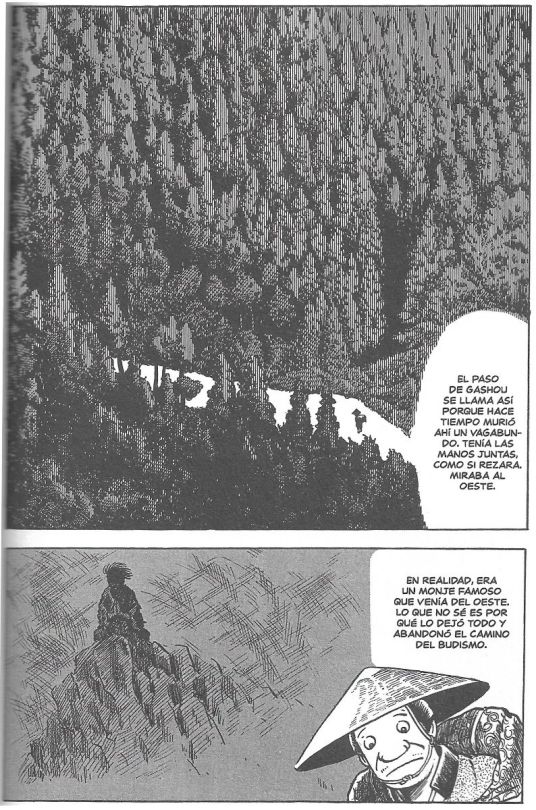
Yoshiharu Tsuge y su hermano Tadao Tsuge son dos de los mangakas que más leo. El nivel de relevancia que tienen es tal que Yoshiharu ha sido el primer autor de manga incluido en la Academia Japonesa de las Artes, muy merecidamente en mi opinión. La obra de Tsuge, a rasgos generales, es una obra que habla de él, de una forma u otra, de sus viajes por Japón, de sus ansias por encontrar un lugar idílico en un mundo hostil. El Japón adolecido tras la posguerra es el marco de multitud de historias, publicadas en la revista Garo, que abarcan desde relatos cortos en los que cuenta alguna historia mezclando sucesos reales con algunos toques surrealistas a ensayos en los que Tsuge se desgarra y se abre en canal, haciendo un repaso de cómo se ve él en el mundo. Un ejemplo de esto último es Salamandra, que recomiendo que leáis aunque sea pirata.

Tanto Yoshiharu como Tadao me parecen dos genios. Tadao hizo la bestialidad que es Mi vida en barco, un cómic increíble en la que el autor hace un repaso de su vida y de cómo un mundo que ha dejado de entender le obliga a buscar su lugar una vez que tiene que dejar de trabajar. Yoshiharu tiene multitud de ejemplos en los que trata esta temática, sobre todo aquellos relatos protagonizados por él mismo, tintados de una nostalgia disfrazada de melancolía que transmite perfectamente cómo el autor recuerda su vida en cada viñeta. Hablando de viñetas, los dos hermanos tienen unas potentísimas transiciones que ayudan a posicionar al lector en el terreno nipón, con una gran fascinación por el Monte Fuji, que va gobernando el paisaje de muchas de estas historias, con su estilo tradicional de gekiga japonés que me encanta. Me gustaría amar tanto un lugar para poder dibujarlo así de bien, a eso deberíamos aspirar como dibujantes y casi que como arquitectos.

Siempre que leo algo de los Tsuge, a excepción de Nejishiki que es una bendita locura, me replanteo mi vida. Con mi vida, me refiero principalmente a la decisión de estudiar arquitectura y de cómo será mi vida el día que ejerza cómo arquitecto. Para Yoshiharu y Tadao, ejercer su empleo como mangakas o autores en general supone una especie de castigo inevitable que tienen que cumplir, o una especie de maldición que creen que no se merecen, no sabría muy bien cómo describirlo. Aquí creo que se abre la puerta de los anhelos de ambos autores por hacer una cosa que implica una paradoja: existir sin existir. Creo que todos, en mayor o menos medida, hemos querido esto en algún punto, pero dejemos este tema para otro momento. A donde quería llegar es que no sé si voy a ser feliz siendo arquitecto, siempre pensaré que disfrutaría más como dibujante, por ejemplo. Esto tiene cierta ironía, ya que ahora literalmente estoy en un punto en el que realmente tengo todo el tiempo del mundo para hacer lo que quiera, pero no lo hago. Si la vida fuese un río, ahora mismo estaría en un punto en el que no hay ni pendiente ni corriente, quieto en el centro, mientras veo como muchos están ya en la parte de los rápidos.
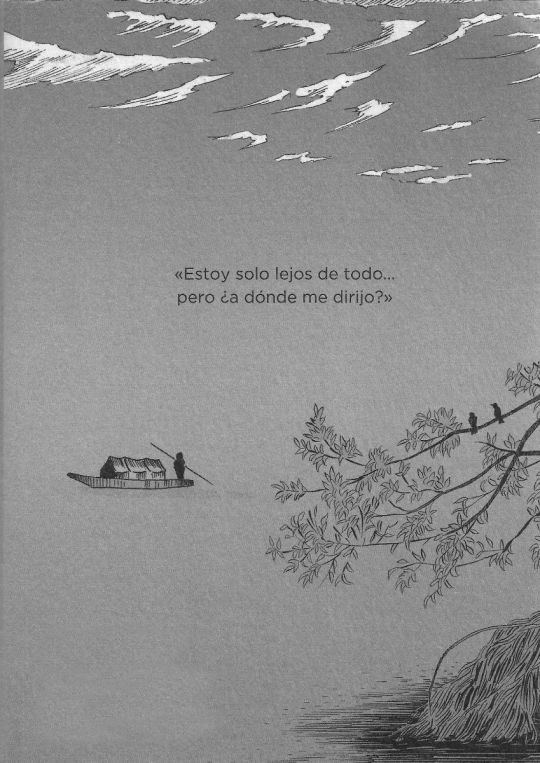
Aunque no lo parezca, sigo hablando de los Tsuge. Este sentimiento invade su obra constantemente. Ya sea en El hombre sin talento o en Mi vida en barco esta sensación de ir sin rumbo por la vida está muy presente, por motivos diferentes. Esa sensación cala en mí especialmente en esta época de echar currículums y agradecer que no me ignoren ni para decirme que no. Pese a la falta de ánimos, viene bien ver que ellos han estado ahí y han acabado con un tío de Jaén leyendo sus desvaríos, así que de todo se puede salir.
Hilado con esto y para acabar con una nota positiva, el otro día estuve viendo la peli Ruido de fondo. Al margen de que no me encantó, aunque cada vez la recuerdo mejor que en le momento de verla, hubo una frase que se me quedó grabada en la cabeza:
“Disfrutemos de este tiempo sin rumbo mientras podamos”
Me parece que es una buena forma de ver esta época de la vida. Aunque estemos en mitad del río, sin rumbo ni corriente que nos guíe, la mejor opción que tenemos es seguir remando y disfrutar del trayecto, aprovechar para ver mejor el paisaje, que ya habrá tiempo de echar de menos la tranquilidad cuando lleguen los rápidos. Y aprovechar para comer mejor y apuntarse al gimnasio, que no viene mal. Ah, y aprovechar para leer a cualquiera de los hermanos Tsuge, que son geniales.
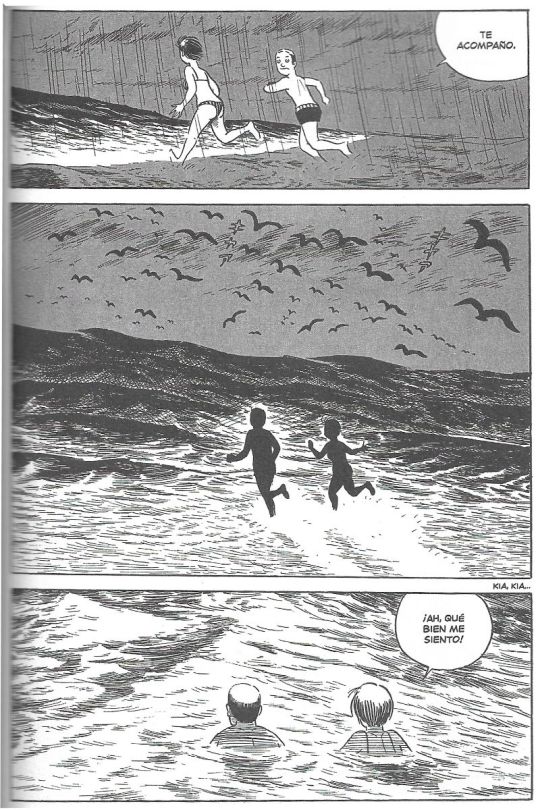
COSAS QUE LEER SIMILARES: Yoshiro Tatsumi, Seiichi Hayashi, Shinichi Abe, GIPI o Zuzu (estos son italianos pero transmiten cosas parecidas en sus cómics) y Arnau Sanz/ en instagram, @i_am_yeono es una genialidad del rollo
Lo que se viene.
Tenía ganas de volver a escribir y, aunque no siempre salen temas, siempre viene bien escribir algo. No tengo nada planeado de momento, pero imagino que entre pelis, series o cómics que vaya leyendo seguro que van saliendo cosas interesantes para comentar o recomendar. Intentaré ser más estricto y mantener una periodicidad constante. Espero que os haya molado este texto sobre Tsuge y la vida y...
¡Nos vemos en el próximo Turno Nocturno!
0 notes
Text
My Journey with Garo
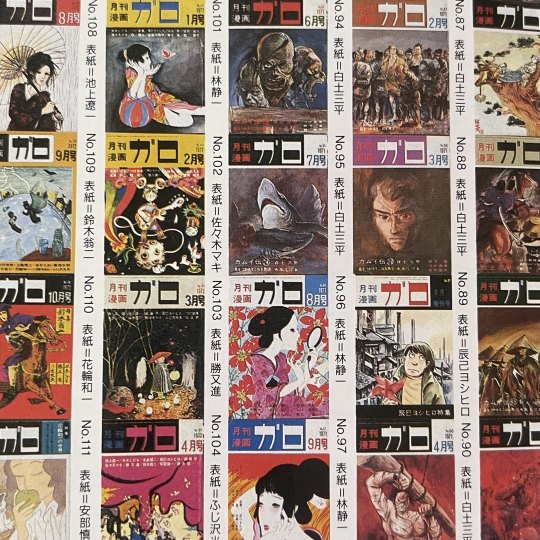
Extract of Garo issue cover art from the Garo Mandala (1991)
It must've been near the end of 2022 when I discovered the treasure trove that is the Monthly Manga Garo, a legendary alternative manga magazine that ran from 1964 to 2002 that thrived against the backdrop of a politically turbulent post-war Japan. In the English market now, we're fortunate enough to be getting a wide variety of translated works from some of the manga greats who had serialised in Garo. From pillars like Tsuge Yoshiharu and Shirato Sanpei to the heta-uma king Ebisu Yoshikazu, you won't ever be bored with the sheer variety of stories, art styles and subject matter that can be seen throughout Garo's lifetime. Pick up any issue and you'll be surprised as to how many types of stories will grace your eyes.
Now back to my personal experience with Garo. I had seen a Garo issue for the very first time through one of Shawn's videos from Japan Book Hunter, a manga plug that I've used for amazing and rare manga that you won't be able to find anywhere except in Japan's jungle of bookstores. His YouTube channel at the time was uploading extremely interesting manga hauls that touched upon a wide variety of lesser-known genres and niches in Japanese comics. There were alternative manga, Shoujo horror, SF, gag and all the other gritty stuff from the wider world of manga outside the usual Shounen Jump. I watched his channel religiously and still look back on some videos to this day, reflecting on how far I've come in learning about manga and manga history. Huge shoutout to Shawn and his store, check him out!
After moving away from the more well-known Seinen and Shounen titles in search of more to explore, my foray into alternative and underground manga was one of the most enlightening experiences in my reading journey. I'd equate my discovery of Garo to my first reads of Borge's short stories, both mind-blowing experiences that have completely transformed my tastes in fiction forever. Garo and my subsequent dives into other alternative manga have now created an insatiable curiosity into what else could be hidden out there in the largely untranslated world of manga. It seems like going backwards in time is the direction I'm taking, but I haven't even scraped the tip of the iceberg yet with Garo, let alone other niches like Shoujo horror and Kashihon. Slowly I'm completing issue after issue, gradually exposing myself to a legendary group of mangaka and artists that have cemented themselves in a magazine that I feel stands the test of time.
At this moment, I have about 40-ish Garo issues on my shelves, and I've read maybe 15 of those. It's a slow reading process, but it's insanely worth it. Each decade is vastly different from the others, so it's extremely fascinating to see the evolution of the magazine over time. For example, starting off in the 60s you have the legendary Kamui-den by Shirato Sanpei, a ninja tale set in feudal Japan that involves social/political commentary on topics like class conflict and oppression. The series was responsible for the birth of Garo because founder Katsuichi Nagai, who I believe was already experienced in the kashihon market, had wanted to give a platform for Shirato to serialize his work. Many stories in the 60s era of Garo were more politically expressive, coinciding with a lot of the unstable politics at the time in Japan. Other mangaka largely present throughout 60s Garo include Mizuki Shigeru, Tsuge Yoshiharu, Nagashima Shinji, Takita Yuu, Tsurita Kuniko and many more.

Various Garo issues from my bookshelf
Then, you move into the 70s. This is where mangaka and artists like Hayashi Seiichi, Tsuge Tadao, Susumu Katsuma and Abe Shinichi start to become more present in the spotlight and appear more frequently in issues. A more surreal and weirder style of stories begin to appear in this decade, marking a key period for Gekiga in my opinion. Personally, when I think Gekiga, my mind goes to people like Hayashi, Tatsumi, Tsuge and Abe, so it's a time that I feel was a very important one for Garo.

Flowering Harbour - Hayashi Seiichi (Garo 1969 May)
The majority of my Garo reads have been towards the tail end of the 60s, with some reads spread throughout the 70s and 90s. Funnily enough, I don't think I have many issues from the 80s. From what I've read from the later decades of Garo though, I've fallen deeply in love. Going from the Tsuges, Hayashis and Mizukis to a whole new world of more contemporary mangaka like Usamaru Furuya, Kawai Katsuo and Maruo Suehiro opened up an even bigger obsession for the magazine. You have an influx of ero-guro (erotic-grotesque) and heta-uma (bad-good) in the scene that introduced a great deal of new names, a lot of whom had also continued into Ax magazine, the spiritual successor to Garo, after the magazine's end. I can make a whole other post on Ax, but that's for another day.

My Youth - Maruo Suehiro (Garo 1983 August)
That about sums up my journey reading Garo from discovery to this current point in time. With 426 issues spanning from the 60s to the early 2000s, I'm not going to run out of issues to read anytime soon. Maybe in a future post, I'll talk more in-depth about specific mangaka and artists that I enjoy. But anyways, thanks for reading my first blog post if you've come this far! Hoping to get out more posts in the future because it really scratches an itch for me when I can express all my thoughts like this in an extended post format.
3 notes
·
View notes
Text
Reading Tadao Tsuge's Slum Wolf anthology, this panel from Vagabond Plain is too real.

0 notes
Text
Was reading Slum Wolf by Tadao Tsuge on my bus ride (was too busy to read manga this weekend so im finally getting around to it) and its so good. Gonna post pictures tonight
0 notes
Text
June 18 - Kyoto International Manga Museum
Today is the day I’ve been looking forward to the most. It felt like I was traveling to the Mecca of my hobby, and while I received no divine visions for my cross world pilgrimage here it was still amazing. The museum presides within a old elementary school, and basically functions as a massive library housing manga as early as the Prewar period. Recently back home I found a copy of Tank Tankuro which is the only Prewar manga I own, and it was so nice seeing it on the shelves here among the few Prewar books that have been collected by the museum. While I don’t understand Japanese just by opening up a random book and flipping through the pages I continue to be in awe at the range of topics, art, and storytelling tackled by manga. While I love films, I feel like manga (and comics by extension) are a unlimited art form not bound by funding or feasibility of creation. You can make any image and any story you want. Thankfully the gift shop wasn’t to alluring (I was seriously worrying) but I did end up finding the first volume of Hokusai manga (the second I found on our first day) so now I have about 800 pages of his beautiful prints. While I know he isn’t connected to the manga I read today, I would still argue inspiration exists at least in the visual aesthetics pursued through Japan (which I love). At the museum we were also treated to a kamishibai performance, which are paper plays voiced by an operator who manipulates images in a small screen. This can be seen almost as a precursor to manga, before humans were able really conceptualize sound image. Once the performance ended my whole class left, but I saw that in the English library they had volumes of Phoenix which can reach hundreds of dollars. With this in mind I stayed for about an extra 2 hours reading what is considered Tezuka’s masterwork. In all honesty it just wasn’t for me. At one point a character stabs another, while declaring his love for her. As she bleeds out they make out and I just had to put it down for a bit. I ignored my hunger while reading but once I left I quickly ran over to the Sukiya across the street which provides quick food at a questionable quality. In preparation for our day trip I chose to rest for the day, finding a yummy French bistro which was equally as affordable but way better.
Academic Reflection
Reading this paper was like butter. It took me about 30 minutes, but I guess that’s what happens when it’s about something you love. I was truly surprised at the quality of this writing, as some papers I’ve read have been really hit or miss. This paper not only provided a wide range of arguments about the possible origin of manga (correctly citing Bringing up Father, which the book Comics and the Origins of Manga by Eike Exner which I’ve been reading also cites) but also described why these arguments exist. I found this of particular interest, as those who argue for mangas connection to ancient Japanese art forms do so in an attempt to legitimize manga as important to Japanese culture. This is because (similarly to video games in the West) manga has been demonized by the broader society as a sort of deviant activity which promotes further deviant behaviors. On it’s face this is wrong, but it also gets closer to issues of class that are faced abroad (more specifically in Japan) regarding how those with privilege view art created and consumed by those of a lower class. These individuals may feel frustrated because manga/anime has become a major (if not the main) cultural export of Japan versus its other high art forms like kabuki, noh, etc. I personally find this sad, but as more and more Japanese people consume manga regularly perspectives are bound to continue to change into the future.
Continuing off manga as a low class art, the papers mention of gekiga made me happy. Recently in my own manga collection, I have been diving deep into gekiga with authors like Tadao Tsuge, Yoshihiro Tatsumi and Yoshikazu Ebisu (Yuichi Yokoyama as well however he is part of another gekiga wave). These authors brought a new energy which was vital for the continued evolution of manga into the future. Without names like these (and many many more) I don’t think we would have manga like it is today. Even though I couldn’t read them I flipped through some of these authors book, and the power of their composition/art was enough to follow the stories.
I was also shocked to see how profitable the manga industry is with it reaching into the billions of dollars. The museum and reading broaches the topic of piracy. I couldn’t even begin to imagine the potential profit numbers of piracy for manga didn’t exist on the scale it does (and the scale is truly massive). However, this reading and our past reading on otaku culture show how ingrained into manga culture derivative work/piracy is. Personally, I engage heavily into this community reading leaks for manga like Jujutsu Kaisen weekly and reading scanlations of manga that will likely never get English releases (I value reading manga physically so I will wait if the possibility exists). For manga like Jujutsu Kaisen I purchase the volumes on release in the West, and I think this is why piracy is allowed. Not only would it be very difficult to crack down on all the scanlation teams (manga publishers would likely have to invest into groups of lawyers which would be costly), but they effectively act as free advertising. While this may be a divisive take for people who are hardline on intellectual property law, I think manga would exist as an interesting case study when a medium and this underbelly synthesis together.
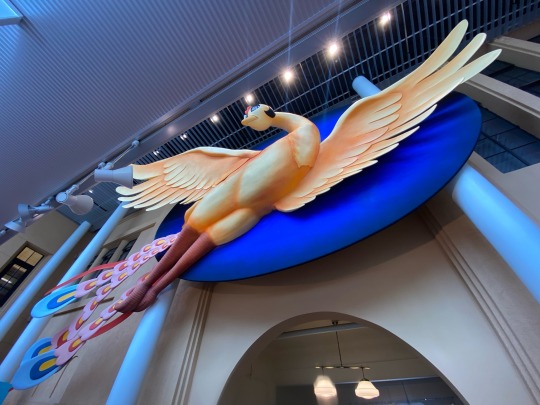

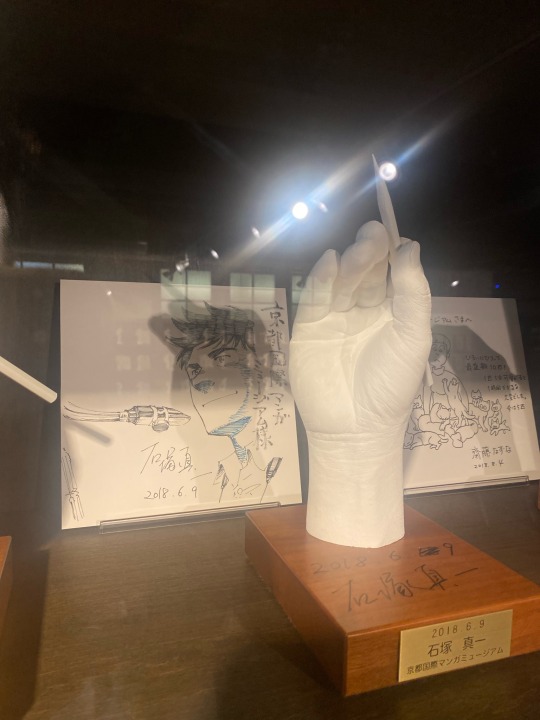
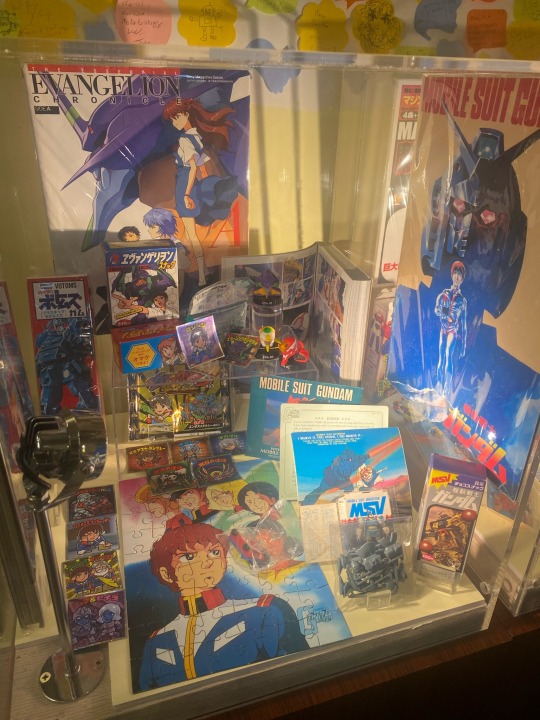


1 note
·
View note
Text
0 notes
Text
Trash market
New item:

Shelf: 726.1 TSU
Trash market.
by Tadao Tsuge ; edited & translated by Ryan Holmberg.
Montreal, Quebec : Drawn & Quarterly, 2015.
ISBN: 9781770461741
270 pages : illustrations ; 23 cm.
Translated into English from the Japanese.
Table of contents:
Up on the hill top, Vincent van Gogh = Oka no ue de, vincento van gohho wa
Song of Shōwa = Shōwa go eika.
Manhunt = Sōsaku.
Gently goes the night : Yoru yo yuruyaka ni.
A tale of absolute and utter nonsense = Kōtōmukei dan.
Trash Market = Kuzu no ichi.
0 notes
Photo

tadao tsuge's slum wolf (english edition) || つげ忠男の『狼の伝説』(英語版)
29 notes
·
View notes
Text

From Tadao Tsuge's Trash Market
14 notes
·
View notes
Photo


逆光線玉葱 68/71黒色テント 10
NUEGUANGXIAN YANGCONG
H・M・エンツェンスベルガー『タイタニック沈没』による
作+美術+演出=佐藤信
表紙=日下潤一、絵=つげ忠男
#NUEGUANGXIAN YANGCONG#逆光線玉葱#68/71黒色テント#劇団黒テント#黒テント#makoto sato#佐藤信#junichi kusaka#日下潤一#tadao tsuge#つげ忠男#anamon#古本屋あなもん#あなもん#book cover
31 notes
·
View notes
Photo
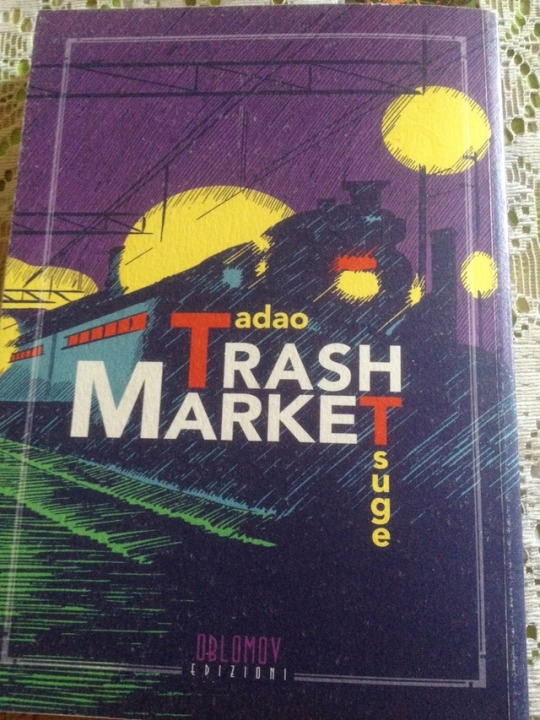


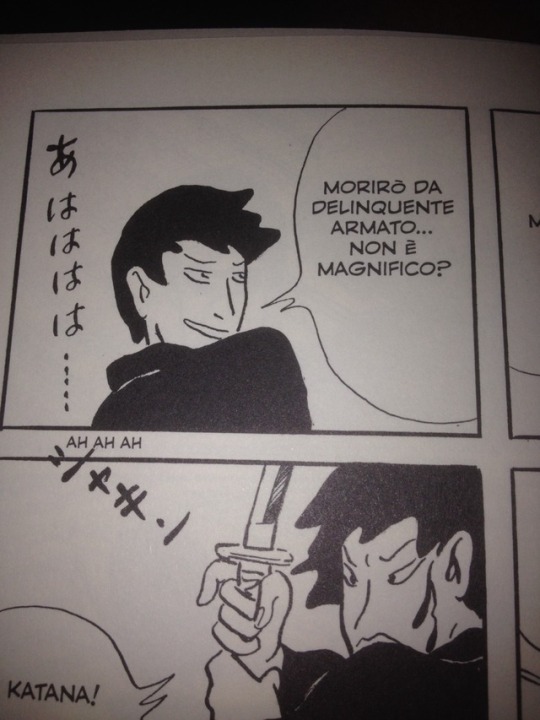


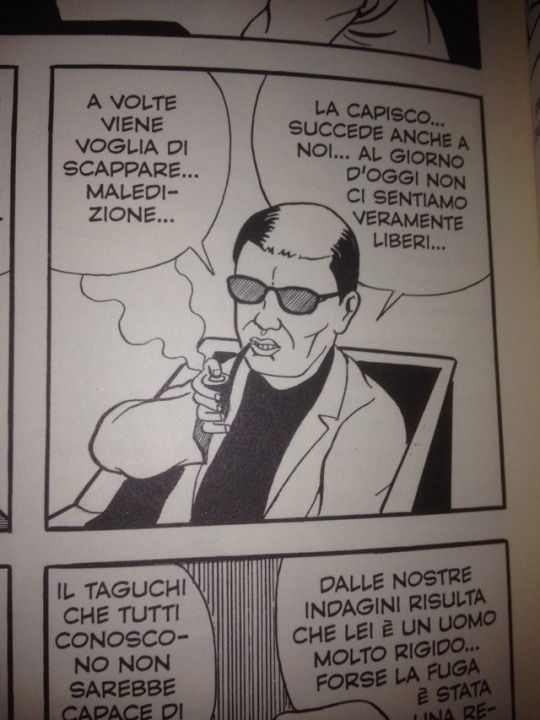
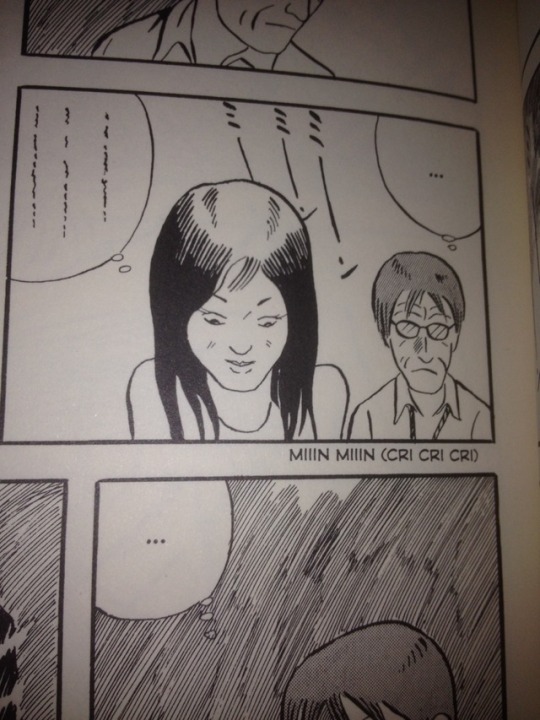


Tadao Tsuge :Trash Market
1 note
·
View note
Text

Tadao Tsuge: Slum Wolf (1969-1978)
1 note
·
View note




